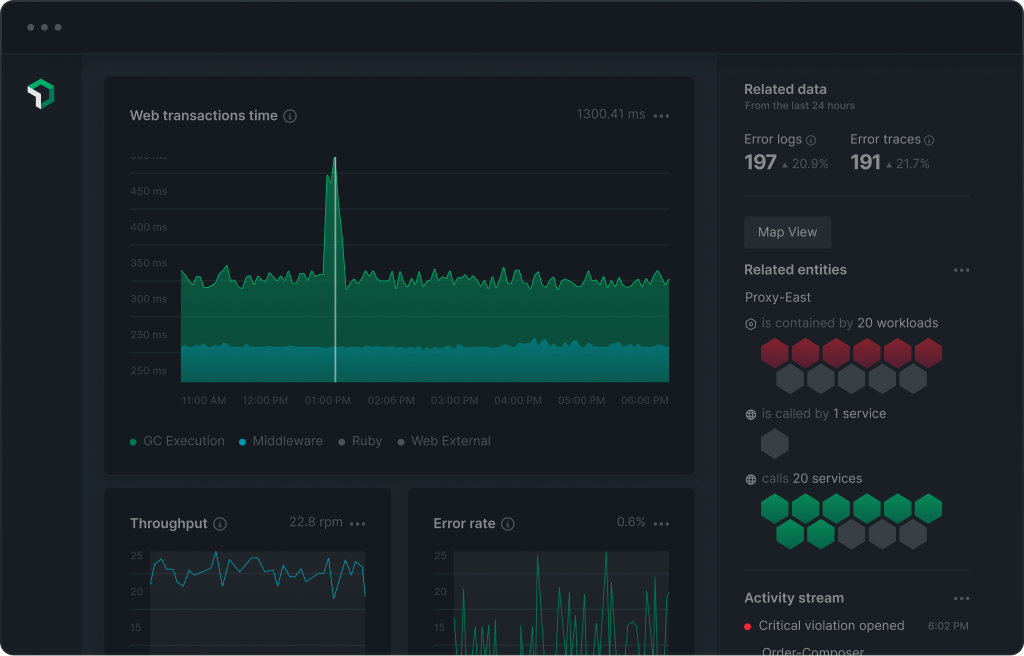Quickstart
What is Azure Data Lake Storage?
Azure Data Lake enables you to capture data of any size, type, and ingestion speed in one single place for operational and exploratory analytics.
New Relic Azure Data Lake Storage quickstart features
A standard dashboard that tracks key indicators like data read, data written, read requests, total storage and written requests. It runs custom queries and visualizes the data immediately.
Why monitor Azure Data Lake Storage with New Relic?
New Relic Azure Data Lake Storage monitoring quickstart empowers you to track the performance of Azure Data Lake Storage via different metrics including data read, data written, read requests, total storage and written requests.
Our integration features a standard dashboard that provides interactive visualizations to explore your data, understand context, and get valuable insights.
Start ingesting your Azure data today and get immediate access to our visualization dashboards so you can optimize your Azure service.
Need help? Visit our Support Center or check out our community forum, the Explorers Hub.

